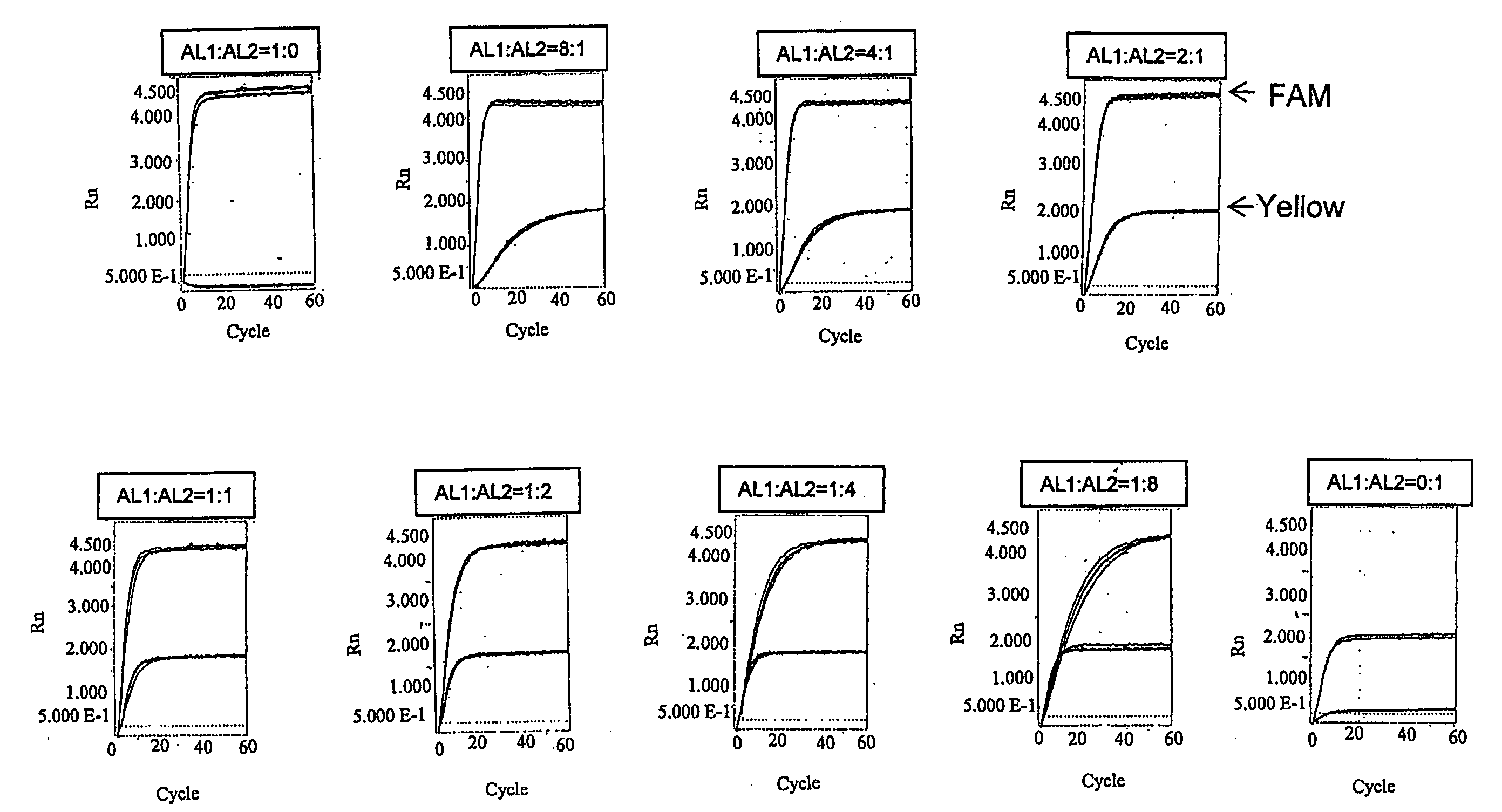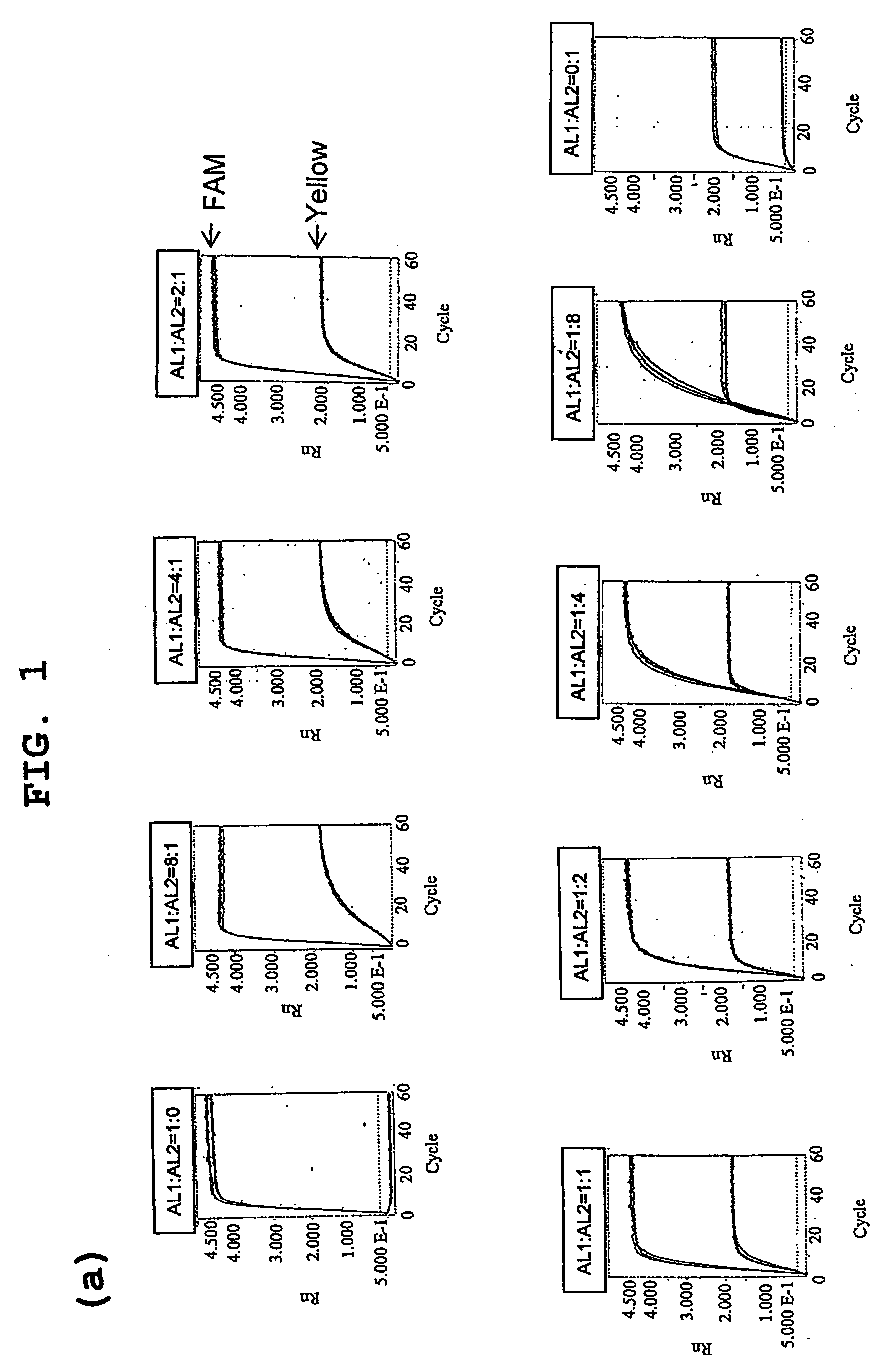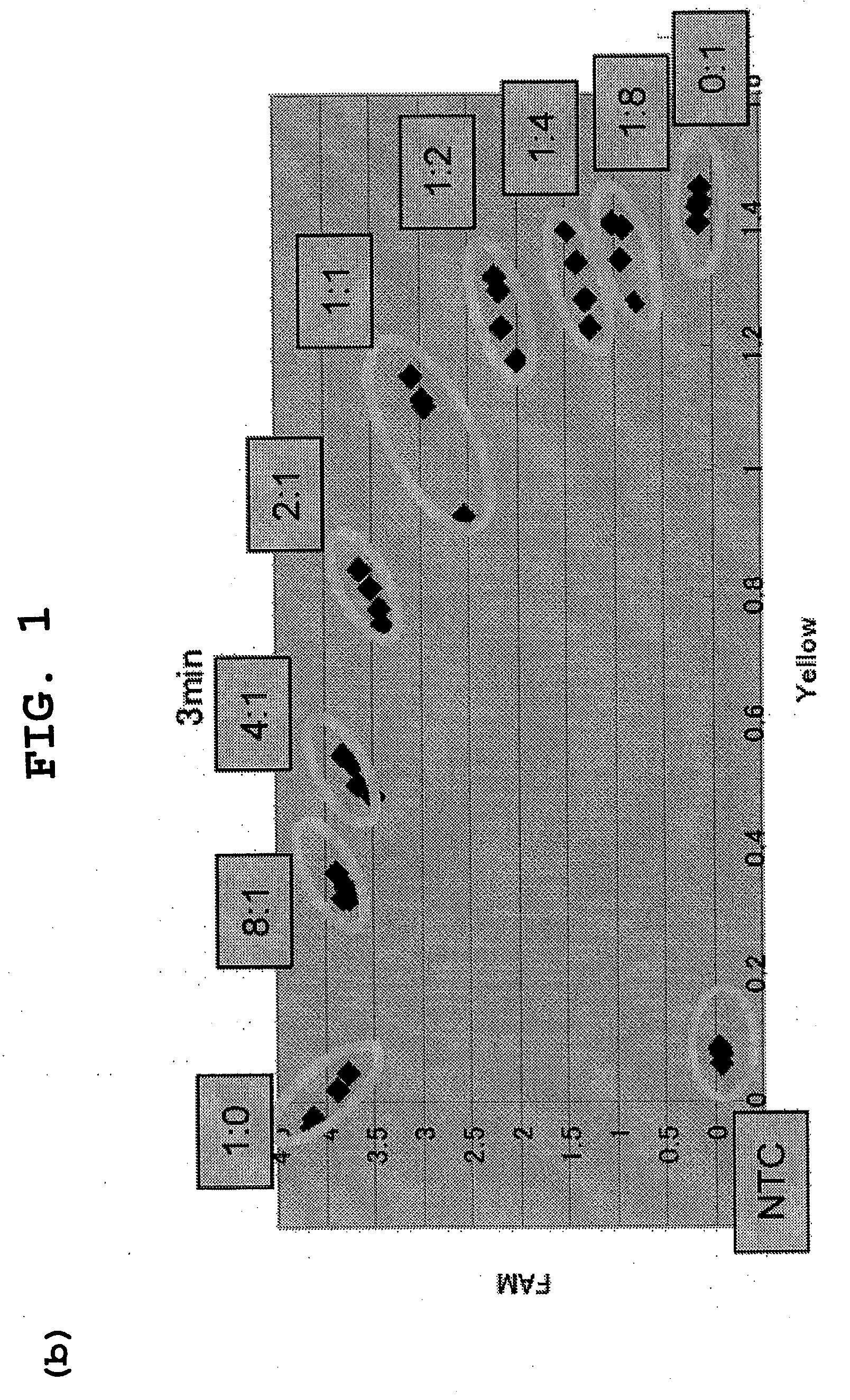Novel method of detecting genetic polymorphism
a genetic polymorphism and polymorphism technology, applied in the field of genetic polymorphism detection, can solve the problems of low resolution of the roma method, inability to detect cnv not more than 50 kb in length, and incomplete identification of deleted or multiplied genomic regions, so as to accelerate the realization of personalized medicine and improve detection
- Summary
- Abstract
- Description
- Claims
- Application Information
AI Technical Summary
Benefits of technology
Problems solved by technology
Method used
Image
Examples
example 1
Materials And methods
[0058]A total of 180 genomic DNA samples consisting of 30 trios of CEPH families with European ancestry (CEU) and 30 trios of Yoruba (YRI) for the International HapMap project [International HapMap Consortium, 2005] were used. These DNA samples were purchased from the Coriell Cell Repository.
PCR-RETINA
[0059]A PCR primer, invader probe and allele probe reported for CYP2D6 assay were used [Nevilie et al., Biotechniques, 32: S34-43, 2002]. The remaining PCR primers were designed using Primer Express 1.5 (Applied Biosystems), and other invader probes and allele probes were designed and synthesized on the basis of reported standards [Mast and Arruda, Methods Mol Biol. 335: 173-186, 2006]. The sequences of all probes and primers are listed in Table 1. FRET probes labeled with FAM or Yakima Yellow were purchased from Third Wave Technologies. The Rox dye (Sigma) was used to normalize reporter signals.
[0060]In all assays, PCR amplification was performed at a p...
example 2
Material And Method
Human Genomic DNA samples
[0072]90 genomic DNA samples from 45 Japanese and 45 Chinese subjects (JCH) used in the International HapMap project phase I were used for the allele frequency analysis and the evaluation of assay performance in mPCR-RETINAs and real-time quantitative PCR assays. Out of these 90 JCH samples, two (NA18996 and NA18540) were omitted from the sample list due to cell line artifacts reported in Am J Hum Genet 2006; 79: 275-290. JCH samples were purchased form the Coriell Cell Repositories (Camden, N.J., USA). Institutional approval for conducting research using human material was obtained from the RIKEN Ethical Advisory Committee for this study.
Multiplex PCR Amplification of CYP2D6 Gene For RETINA
[0073]To estimate the allele ratio of each SNP, indel or gene conversion polymorphism by RETINA, PCR amplifications of CYP2D6 gene were performed before RETINA. Triplex PCR covering whole CYP2D6 gene region was performed. The most of PCR primers were ad...
PUM
| Property | Measurement | Unit |
|---|---|---|
| Ratio | aaaaa | aaaaa |
| Fluorescence | aaaaa | aaaaa |
Abstract
Description
Claims
Application Information
 Login to View More
Login to View More - R&D
- Intellectual Property
- Life Sciences
- Materials
- Tech Scout
- Unparalleled Data Quality
- Higher Quality Content
- 60% Fewer Hallucinations
Browse by: Latest US Patents, China's latest patents, Technical Efficacy Thesaurus, Application Domain, Technology Topic, Popular Technical Reports.
© 2025 PatSnap. All rights reserved.Legal|Privacy policy|Modern Slavery Act Transparency Statement|Sitemap|About US| Contact US: help@patsnap.com



